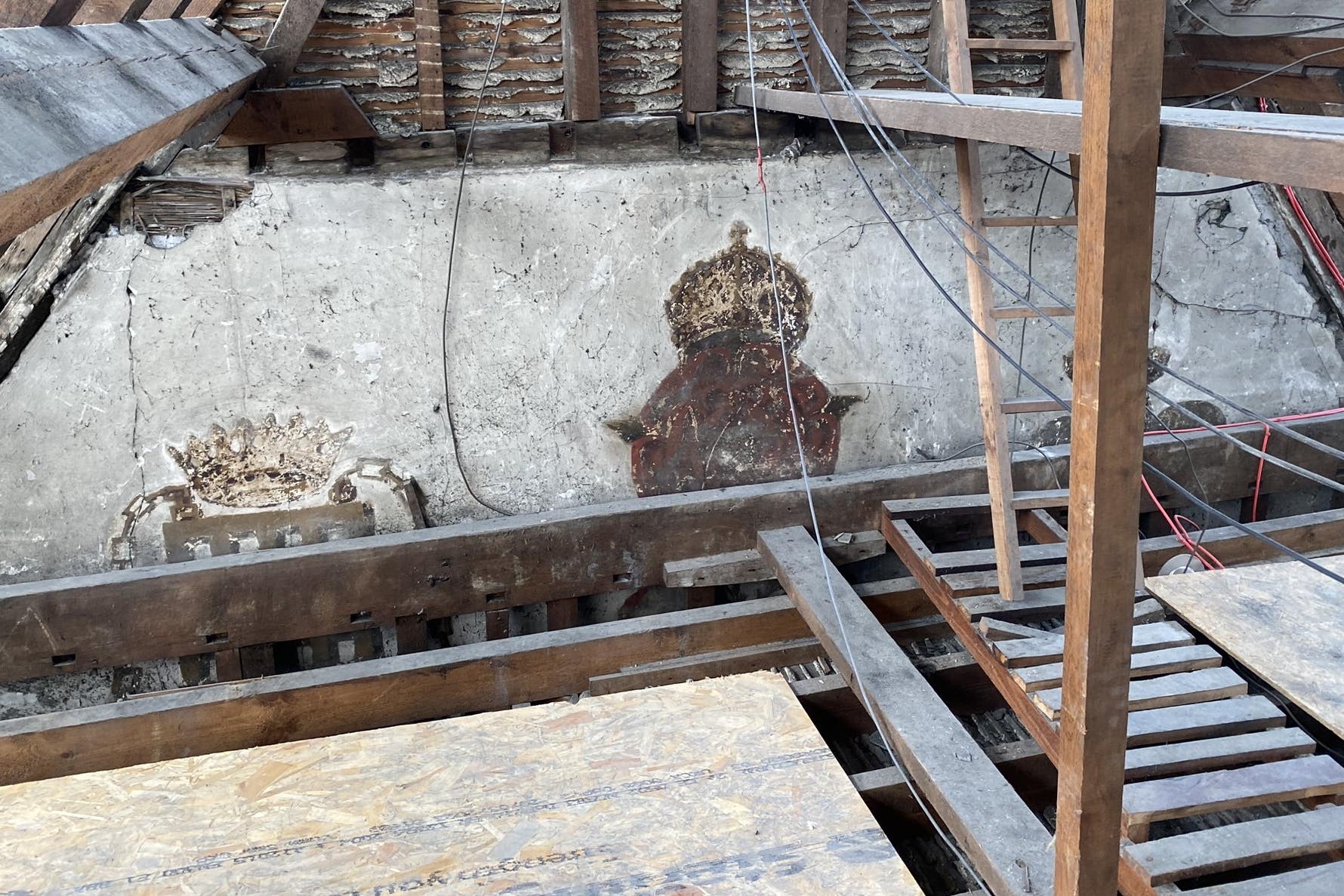Rare medieval wall paintings found at Cambridge University by builders
The artwork, which celebrated the royal patron of Christ’s College during the early 16th century, was discovered during restoration work.

Rare medieval wall paintings that had been hidden for almost 300 years have been uncovered by builders working in a roof space at Cambridge University.
The artwork, which celebrated the royal patron of Christ’s College during the early 16th century, was discovered in the oldest part of the building during restoration work.
The three crowned motifs, depicting a red Lancastrian rose, portcullis and a probable fleur-de-lis, were found in First Court, with the building dating back to the 15th century and the paintings likely dating back to the early 16th century.
The college was first established as God’s House in 1437 before moving to its present site in 1448.
It was re-founded as Christ’s College in 1505 by Henry VII’s mother, Lady Margaret Beaufort.
The portcullis was the badge of the Beaufort family.
Cambridge University art historian Dr Christina Faraday, who specialises in Tudor visual and material culture, said: “This is a really exciting and unusual discovery, revealing the ways that the College celebrated and advertised its royal patron during the early years of the 16th century, following its re-founding.
“A powerful and pious woman, with a keen interest in scholarship, Lady Margaret left her indelible mark on the College, and the wall paintings are an early example of her family’s savvy use of visual ‘branding’ even beyond the royal court.
“Henry VII had a very weak claim to the throne, but became adept at using visual symbols like this to promote his kingship.
“The motifs continue to be tied up with the College’s identity to this day, but as an early example of Tudor ‘marketing’, the wall paintings demonstrate the long history of something we think of as a modern phenomenon.”
Dr Faraday said the red Lancastrian rose is popularly thought to have been the badge of one of the two warring houses during the Wars of the Roses, but was most probably invented by Henry VII after his victory, to mirror the Yorkist emblem of the white rose.
The fleur-de-lis symbol has represented English kings since the time of Edward III when they also claimed to be kings of France.
“Such survivals are extremely unusual,” said Dr Faraday.
“Wall paintings were a relatively cheap and disposable form of decoration, and so were rarely deliberately preserved.”
The 20ft (6m) wide design – partially obscured by a wooden joist – is located in the roof space of what probably formed the north-west wall of the original Library.
It is painted on to a fine plaster layer with evidence of limewash applied around the designs.
After the discovery was made, the College delved into its archives and found that the last known recorded sighting of the wall paintings was in around 1738.
The covered location in the roof space has enabled the paintings to survive in good condition, but means they will not be on general view.
The College has obtained specialist advice about how to protect and conserve them during the ongoing restoration work and in the future.
Lord Simon McDonald, Master of Christ’s College, said: “It was a surprise when these wall paintings, which have been hidden for almost 300 years, were revealed.
“I am privileged to be one of the few people to see them up close.
“At Christ’s we value all evidence of our Founder; this most fragile evidence has survived by concealment.
“After basic restoration, we will store the paintings away once again, a time-capsule which might be uncovered in another 300 years.”
Bookmark popover
Removed from bookmarks